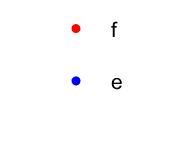Predictions & Data for this entry
| Model: std | climate: Dfb, Dfc | migrate: | phylum: |
| COMPLETE = 2.4 | ecozone: THn | food: biCi | class: |
| MRE = 0.040 | habitat: 0jFp, jiTf, jiTg | gender: Dg | order: |
| SMSE = 0.004 | embryo: Fpf | reprod: O | family: |
Zero-variate data
| Data | Observed | Predicted | (RE) | Unit | Description | Reference |
|---|---|---|---|---|---|---|
| tp | 730 | 727 | (0.00405) | d | time since birth at puberty | guess |
| am | 2190 | 2190 | (1.374e-05) | d | life span | HsuHsie2014 |
| Lj | 1.36 | 1.36 | (2.116e-06) | cm | SVL at metam | HsuHsie2014 |
| Lp | 3.2 | 3.169 | (0.0098) | cm | SVL at puberty for females | guess |
| Li | 5.8 | 6.008 | (0.03587) | cm | ultimate SVL for females | HsuHsie2014 |
| Lim | 4.6 | 4.519 | (0.01763) | cm | ultimate SVL for males | HsuHsie2014 |
| Wwb | 0.0244 | 0.02379 | (0.02508) | g | wet weight at birth | LaiKam2003 |
| Wwi | 14.4 | 14.68 | (0.0192) | g | ultimate wet weight for females | guess |
| Ri | 0.6164 | 0.601 | (0.02499) | #/d | maximum reprod rate | LaiKam2003 |
Uni- and bivariate data
| Data | Figure | Independent variable | Dependent variable | (RE) | Reference |
|---|---|---|---|---|---|
| tL_fm |   | time since birth | SVL | (0.07854) | HsuHsie2014 |
Pseudo-data at Tref = 20°C
| Data | Generalised animal | Rana sauteri | Unit | Description |
|---|---|---|---|---|
| v | 0.02 | 0.02445 | cm/d | energy conductance |
| p_M | 18 | 45 | J/d.cm^3 | vol-spec som maint |
| k_J | 0.002 | 0.002 | 1/d | maturity maint rate coefficient |
| k | 0.3 | 0.3247 | - | maintenance ratio |
| kap | 0.8 | 0.5473 | - | allocation fraction to soma |
| kap_G | 0.8 | 0.8019 | - | growth efficiency |
| kap_R | 0.95 | 0.95 | - | reproduction efficiency |
Discussion
- Males are assumed to differ from females by {p_Am} and E_Hp only
Facts
- Tadpoles have an abdominal sucker, and adaptation to living in fast-flowing streams (Ref: amphibiaweb)
Bibliography